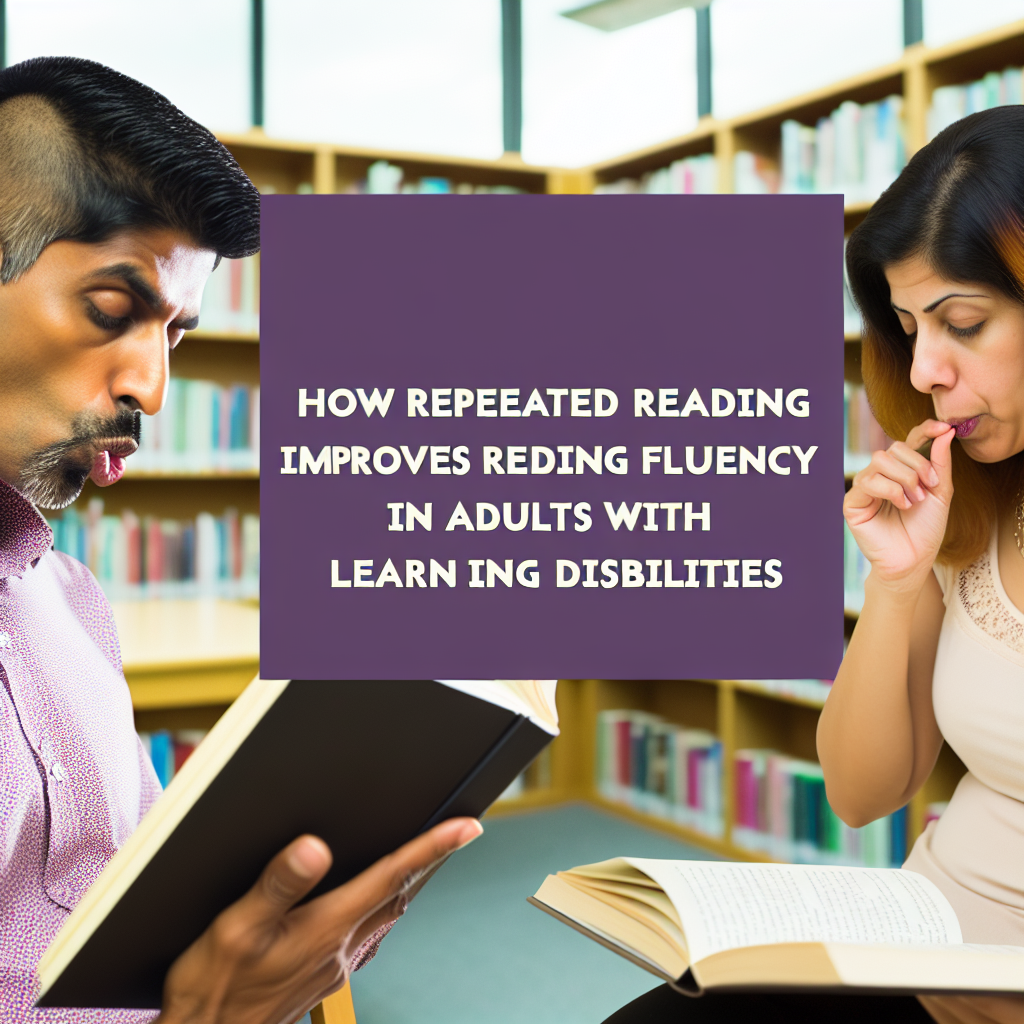The Effect of Repeated Reading on Reading Fluency for Adults with Learning Disabilities
Reading fluency is essential for success in academic, professional, and everyday settings. Unfortunately, many adults with learning disabilities struggle with reading fluency, affecting their confidence and ability to keep up with work and school demands. While interventions like repeated reading have been widely studied for children, there has been little research on their effectiveness for adults.
A recent study by Halkowski and Kubina (2024) explored how repeated reading (RR) impacts reading fluency in adults with learning disabilities. This blog post breaks down their findings and what they mean for behavior analysts working with adults who struggle with reading.
Understanding Reading Fluency and Repeated Reading
Reading fluency consists of three key components:
- Accuracy – Correctly reading words without mistakes.
- Automaticity – Recognizing words quickly and effortlessly.
- Prosody – Reading with natural intonation and rhythm.
Fluent reading is critical because it allows individuals to focus on comprehension rather than struggling to decode words. However, many adults with learning disabilities continue to read at an 8th-grade level or below, making academic and workplace tasks more challenging.
What Is Repeated Reading?
Repeated reading (RR) is a structured practice where an individual reads a passage multiple times until they reach a fluency goal. Key elements of RR include:
- Selecting an appropriately leveled passage.
- Timing one-minute readings to track speed and accuracy.
- Providing feedback and support to improve fluency.
Research has shown RR to be highly effective for improving reading skills in children, but its impact on adults has not been widely studied—until now.
Study Overview: Repeated Reading for Adults
Halkowski and Kubina (2024) designed a study to examine how RR affects reading fluency in adults with learning disabilities.
Research Questions
- Does RR improve reading fluency for adults with learning disabilities?
- Do fluency gains remain long after the intervention ends?
- Can telecommunication (e.g., Zoom) be an effective way to deliver reading interventions?
Participants and Setting
- Two adults with diagnosed learning disabilities participated.
- Both had struggled with reading since childhood and continued to have difficulty in academic and workplace settings.
- The study was conducted remotely using video calls and email.
Study Design and Procedures
To measure the impact of RR, the researchers employed an alternating-treatments design, which allowed them to compare different reading conditions.
- Each participant read two types of passages: one using RR and one without RR.
- Correct words per minute (CWPM) was recorded to measure improvements.
- Fluency checks were conducted 1 week, 2 weeks, and 1 month after the intervention to assess retention.
Key Findings
1. Repeated Reading Improved Fluency
Both participants showed notable increases in CWPM after engaging in RR compared to baseline readings. These findings align with earlier research on RR's effectiveness for children and suggest that adults can benefit just as much.
2. Fluency Gains Were Retained Over Time
When tested weeks after the intervention ended, both participants retained much of their fluency gains. This suggests that RR not only improves immediate reading ability but also builds lasting skills.
3. Telecommunication Was an Effective Delivery Method
Conducting RR sessions over Zoom and sending materials via email proved to be a viable way to support adult learners. This finding is particularly important for educators and behavior analysts looking to provide remote instruction.
Implications for Behavior Analysts
This study provides valuable insights for behavior analysts who work with adults struggling with reading fluency. Here are three key takeaways:
- RR Is an Effective Evidence-Based Intervention – Given the positive results in adults, RR should be considered when designing fluency interventions.
- Retention Checks Are Valuable – Regular follow-ups can ensure that fluency gains are maintained over time.
- Remote Interventions Are Feasible – Virtual sessions can increase accessibility, allowing more adults to receive effective reading support.
Conclusion
Halkowski and Kubina's (2024) study highlights the effectiveness of RR in improving reading fluency for adults with learning disabilities. It also demonstrates that these gains can be retained over time and that remote instruction can be a successful mode of delivery.
For behavior analysts working with adult learners, incorporating RR into intervention plans may lead to significant improvements in reading fluency and, ultimately, greater confidence and success in academic and professional settings.
Call to Action
To read the full study and explore its findings in more detail, check out the original research here: https://doi.org/10.1007/s40617-024-00926-0.



